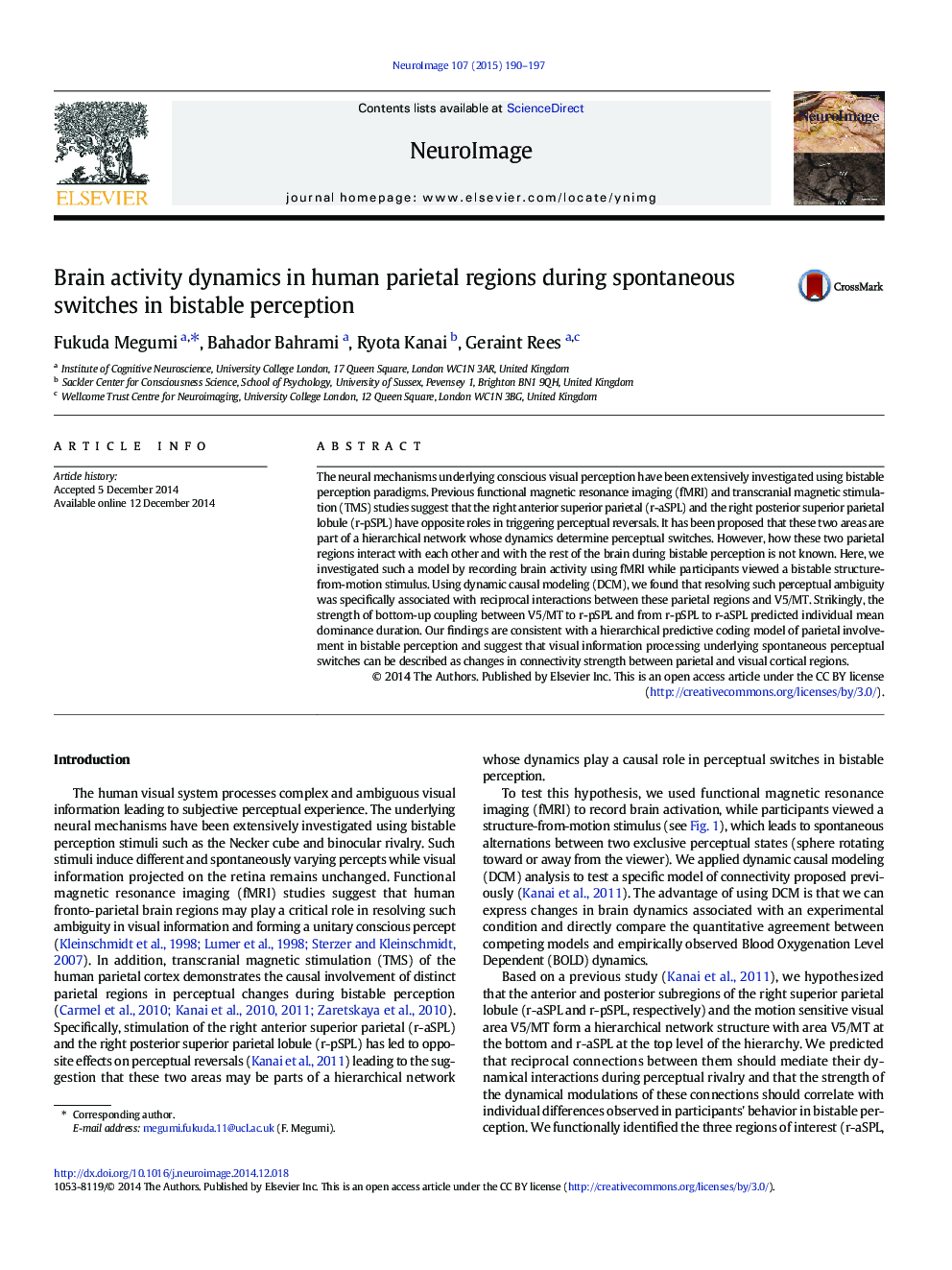| Article ID | Journal | Published Year | Pages | File Type |
|---|---|---|---|---|
| 6026175 | NeuroImage | 2015 | 8 Pages |
â¢Two parietal regions involve spontaneous perceptual switches.â¢The two parietal regions and V5/MT form hierarchical model.â¢Strength of DCM parameters predicts individual switch frequency.
The neural mechanisms underlying conscious visual perception have been extensively investigated using bistable perception paradigms. Previous functional magnetic resonance imaging (fMRI) and transcranial magnetic stimulation (TMS) studies suggest that the right anterior superior parietal (r-aSPL) and the right posterior superior parietal lobule (r-pSPL) have opposite roles in triggering perceptual reversals. It has been proposed that these two areas are part of a hierarchical network whose dynamics determine perceptual switches. However, how these two parietal regions interact with each other and with the rest of the brain during bistable perception is not known. Here, we investigated such a model by recording brain activity using fMRI while participants viewed a bistable structure-from-motion stimulus. Using dynamic causal modeling (DCM), we found that resolving such perceptual ambiguity was specifically associated with reciprocal interactions between these parietal regions and V5/MT. Strikingly, the strength of bottom-up coupling between V5/MT to r-pSPL and from r-pSPL to r-aSPL predicted individual mean dominance duration. Our findings are consistent with a hierarchical predictive coding model of parietal involvement in bistable perception and suggest that visual information processing underlying spontaneous perceptual switches can be described as changes in connectivity strength between parietal and visual cortical regions.
